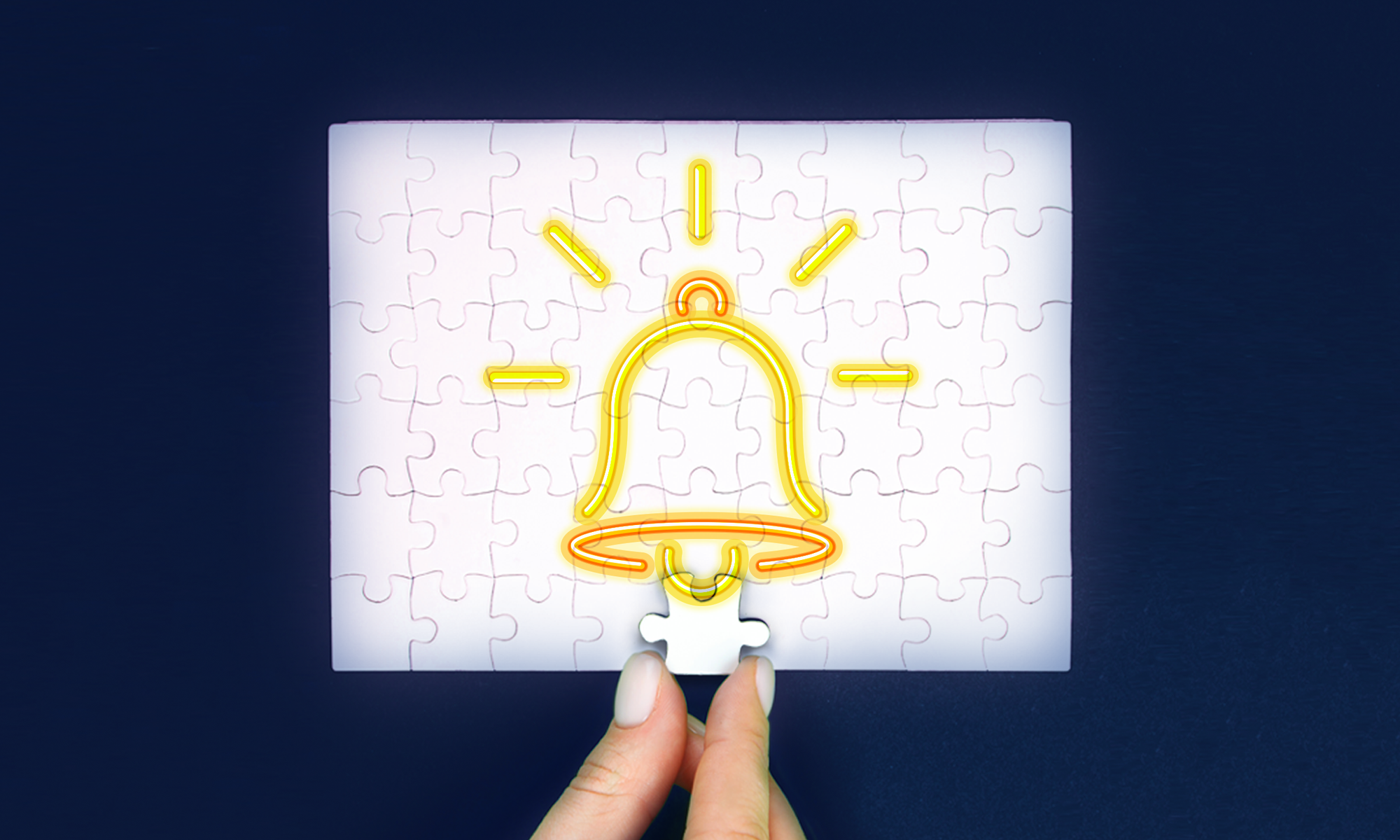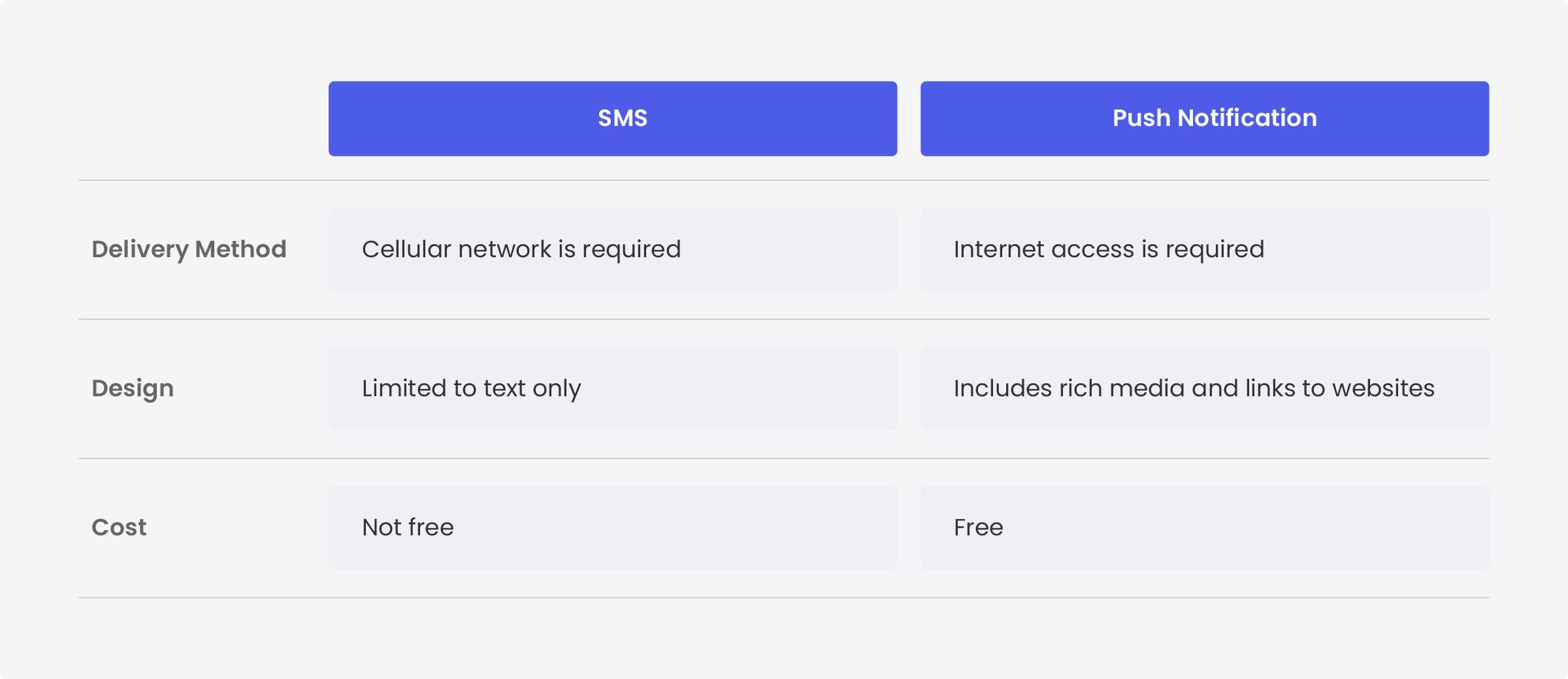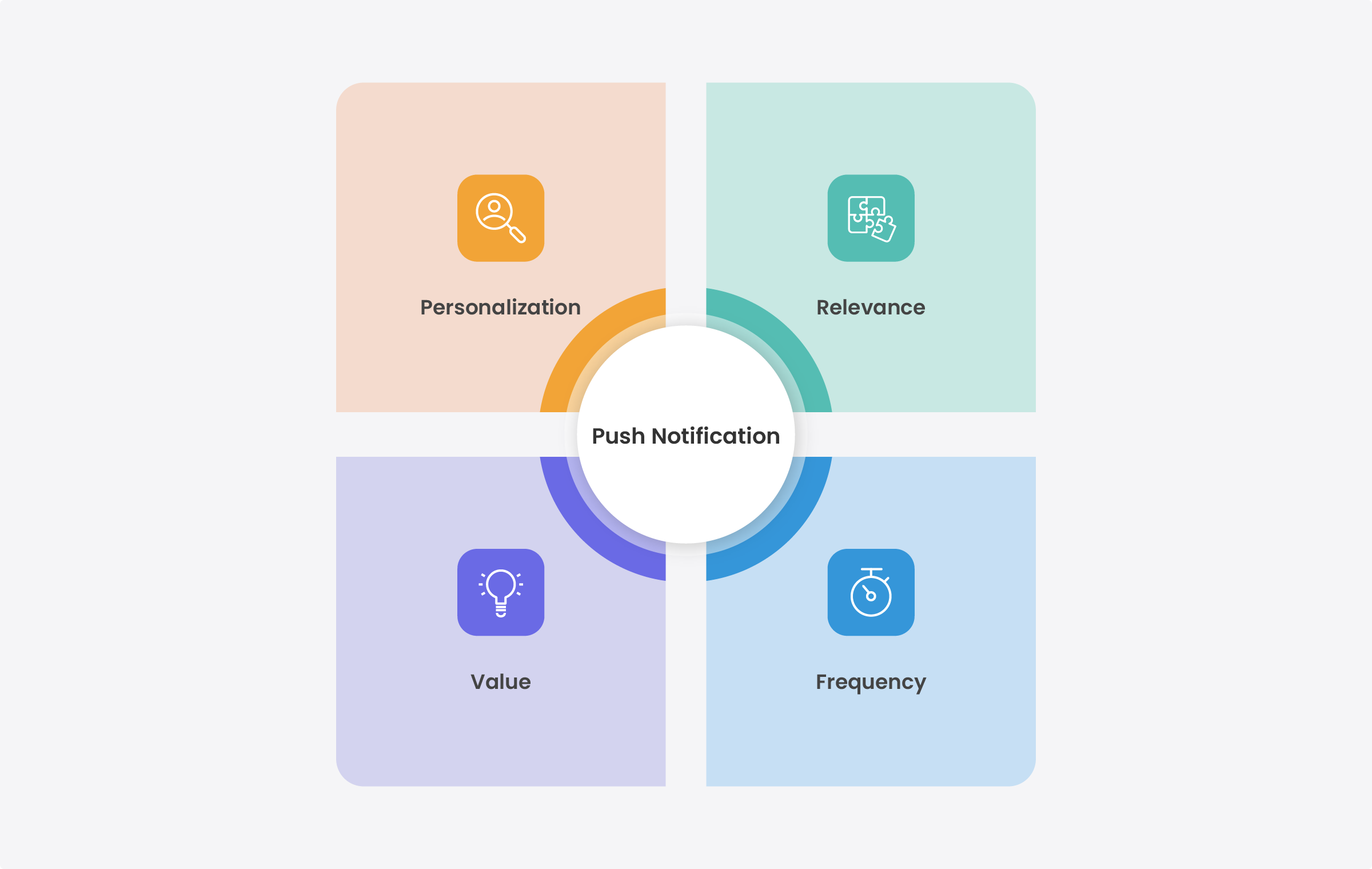What Are Push Notifications?

Have you ever glanced at your phone and seen a small message about a sale, breaking news, or a friendly reminder? Those are push notifications, a powerful tool businesses use to connect with you directly on mobile devices.
In today’s blog, we'll explore the world of push notifications, their origin, design, and the industries utilizing them. We'll also compare them to SMS marketing, highlight the benefits they offer businesses, and share some secrets to crafting effective push notification messages. Finally, we'll peek into the future of push notifications and see how we can help you leverage their true potential.
The Origin of Push Notifications
In the early days of mobile internet, push notifications were a far cry from the targeted marketing tool they are today. The turning point came with the rise of smartphones and a booming app ecosystem. In 2009, Apple paved the way by introducing the Apple Push Notification Service (APN) for iOS devices. This groundbreaking technology allowed app developers to send targeted messages to users' iPhones, iPads, and other Apple devices.
Next, Google joined the push notification party 2010 with their Android Cloud to Device Messaging (C2DM), which became today's widely used Firebase Cloud Messaging (FCM). But they didn't stop there. In 2013, they introduced push notifications with images and clickable buttons. These significantly improved over the earlier versions that only displayed text, making them more powerful marketing tools.
With these advancements, businesses began to see the immense potential of push notifications as a direct marketing channel. This phenomenal technological transition laid a foundation for push notifications to evolve into the hyper-personalized, data-driven marketing tool we use today.
What Do They Look Like?

Push notifications typically appear as small banners or pop-ups on your phone's lock screen or notification center. They usually contain a short message, an app icon, and sometimes an image or emoji. They can be interactive, too, allowing you to tap on them to be taken directly to a specific app screen, website, or action within the app. Here's an overview of the features of Android and iOS push notifications:
Character Limit: On Android, the character limits are 65 characters for titles and 240 for descriptions. On iOS, the total limits are four lines/178 characters.
App Icon: The application's preset icon can be changed per message.
Rich Media: An image size of 500KB is recommended for both platforms. Supports PNG and JPEG formats.
Action Button: iOS supports up to 4 buttons, while Android supports up to 3.
Which Industries Are Using Push Notifications?
Push notifications have become a staple marketing tool across various industries. Here are a few prominent examples:
Online Travel Industry: Airlines and travel companies use personalized push notifications to send flight updates and exclusive deals on hotels and activities at a desired time.
E-commerce: Retailers leverage push notifications to alert customers about flash sales, abandoned carts, personalized product recommendations, and new arrivals.
Finance: Banks and financial institutions use push notifications for account updates, transaction alerts, and security verifications.
SMS vs Push Notifications

Push notifications and SMS are effective ways to reach mobile users, but they cater to different needs. Here's a breakdown of their fundamental differences:
Delivery Method:
- SMS: Users provide their mobile numbers to businesses where they agree to receive marketing information. Uses a cellular network.
- Push Notification: Users typically opt-in to receive notifications after installing and opening an app. Internet access is required.
Design:
- SMS: Limited to text only.
- Push Notification: Include text, emojis, images, clickable buttons, and website links for direct action.
Cost:
- SMS: Usually involves a charge per message sent or bundled into a bulk text messaging package with a discounted price for sending a specific number of messages.
- Push Notification: Push notifications are sent at no cost. However, there is a maintenance fee associated with server and database upkeep.
Benefits of Using Push Notifications for Businesses
In today's hyper-competitive marketplace, keeping users engaged is a constant battle, and push notifications are your go-to strategy. They've become an essential marketing tool for businesses of all sizes, and here's why:
- High Opt-in Rates: Compared to emails or social media posts, push notifications boast a higher opt-in rate of 60%, leading to better customer engagement.
- Real-Time Communication: Businesses can send timely updates and promotions to customers’ mobile devices.
- Increased Sales and Conversions: Well-crafted, tailored push notifications can turn leads into customers, driving more traffic to your app or website, ultimately leading to revenue growth.
- Brand Awareness and Loyalty: Regular push notifications help keep your brand top-of-mind and build long-lasting customer loyalty. People LOVE to be updated, provided the information delivered is exciting, resourceful, or relevant.
Push Notification Maxims

To craft push notification messages that lead to conversion and retention, you must satisfy your users first. Here are four golden rules to remember:
- Personalization: Personalize messages based on user behavior and information. For example, you can prompt the message by inserting their first names, industry-specific tags (e.g., highest game score), or rich media.
- Relevance: Ensure your push notifications are relevant to users' needs and interests. For example, if your user searched for organic bagels and left them in a cart, you can send a message: "Hi, make your brunch more exciting with organic blueberry bagels at a 20% discount!”
- Frequency: More isn’t always better; do not bombard users with unwanted messages without proper research, as they’ll uninstall the app and never return. To optimize push notification frequency, utilize A/B testing and analytics to send notifications when users are most likely to engage. Regularly adjust strategies based on feedback and performance data for continual improvement.
- Value: The value for customers often lies beneath the surface of your message. Before sending a push notification, consider its purpose: does it solve a problem, present choices, or offer immediate satisfaction? Once you've identified the value you aim to deliver, ensure it's seamlessly integrated into your message for maximum impact and resonance.
By following these principles, you can craft effective push notifications that resonate with your audience, drive engagement, and ultimately contribute to your marketing goals. Long story short– the perfect push is a well-timed, relevant message offering the user actual value.
The Future of Push Notifications
According to market research, the push notification software market is expected to reach USD 8.95 billion by 2026, with a Compound Annual Growth Rate (CAGR) of 31.5% over the forecast period.
Also, the development of AI technology and data-driven analytic tools promises a bright future for push notifications. This advancement will lead to greater personalization, speed, and affordability. Research indicates that companies leveraging AI-based customer targeting have experienced significant improvements, including a 9%-20% increase in conversion rates and a 13%-31% decrease in churn rates.
Furthermore, push notifications are expected to become more interactive, utilizing features such as rich media and location-based triggers. As personalization becomes more sophisticated, machine learning will play a bigger role in tailoring notifications to individual users.
Ultimately, the advancement of AI technology will facilitate the creation of more engaging messages and the acquisition of more sophisticated user data.
How FlareLane Can Help
FlareLane is a customer journey-based marketing software specializing in push notifications. We enable marketers to control user behavior through pre-built customer journeys, leading to increased conversion rates and business growth.
Moreover, it provides advanced push notifications infrastructure with just one line of code for early-stage businesses, reducing the time and cost required for setup.
As a FlareLane user, you’ll be able to enjoy real-time data analysis to track key metrics such as conversion rates and click-through rates, optimizing marketing campaigns and allowing you to visualize growth at one glance.
Are you looking for a user-friendly customer engagement service to improve your business's conversion rate? Click the link below to learn more!


